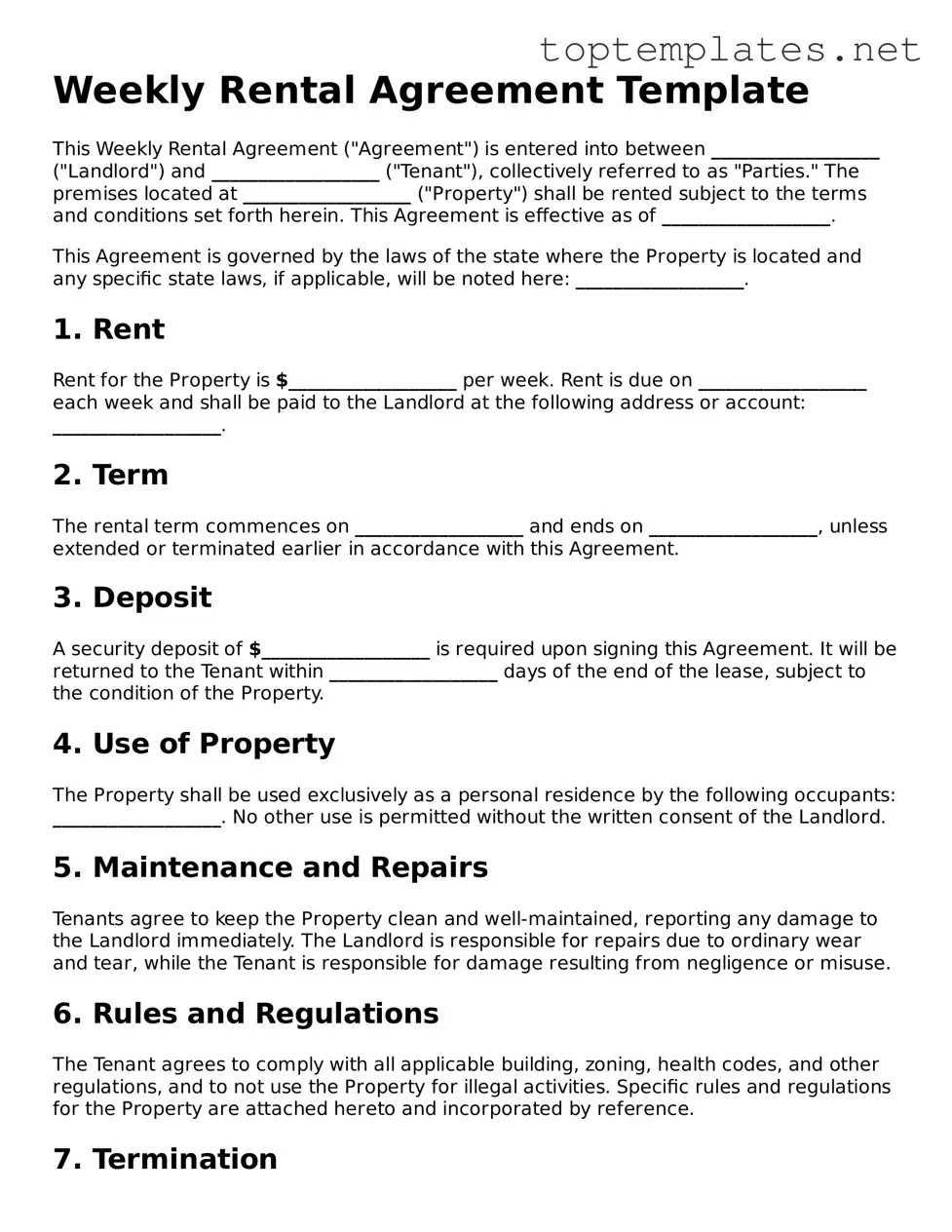Weekly Rental Agreement Template
This Weekly Rental Agreement ("Agreement") is entered into between __________________ ("Landlord") and __________________ ("Tenant"), collectively referred to as "Parties." The premises located at __________________ ("Property") shall be rented subject to the terms and conditions set forth herein. This Agreement is effective as of __________________.
This Agreement is governed by the laws of the state where the Property is located and any specific state laws, if applicable, will be noted here: __________________.
1. Rent
Rent for the Property is $__________________ per week. Rent is due on __________________ each week and shall be paid to the Landlord at the following address or account: __________________.
2. Term
The rental term commences on __________________ and ends on __________________, unless extended or terminated earlier in accordance with this Agreement.
3. Deposit
A security deposit of $__________________ is required upon signing this Agreement. It will be returned to the Tenant within __________________ days of the end of the lease, subject to the condition of the Property.
4. Use of Property
The Property shall be used exclusively as a personal residence by the following occupants: __________________. No other use is permitted without the written consent of the Landlord.
5. Maintenance and Repairs
Tenants agree to keep the Property clean and well-maintained, reporting any damage to the Landlord immediately. The Landlord is responsible for repairs due to ordinary wear and tear, while the Tenant is responsible for damage resulting from negligence or misuse.
6. Rules and Regulations
The Tenant agrees to comply with all applicable building, zoning, health codes, and other regulations, and to not use the Property for illegal activities. Specific rules and regulations for the Property are attached hereto and incorporated by reference.
7. Termination
This Agreement may be terminated by the Landlord if rent is not paid on time or if the Tenant violates any terms of this Agreement. Upon termination, the Tenant must vacate the premises immediately.
8. Governing Law
This Agreement shall be governed by and construed in accordance with the laws of the state in which the Property is located, without regard to its conflict of laws principles.
9. Entire Agreement
This Agreement constitutes the entire agreement between the Parties and supersedes all prior negotiations, understandings, or agreements between the Parties. Any amendments to this Agreement must be in writing and signed by both Parties.
10. Acknowledgment
By signing below, the Parties acknowledge they have read, understand, and agree to be bound by the terms of this Weekly Rental Agreement.
Landlord Signature: __________________ Date: __________________
Tenant Signature: __________________ Date: __________________
